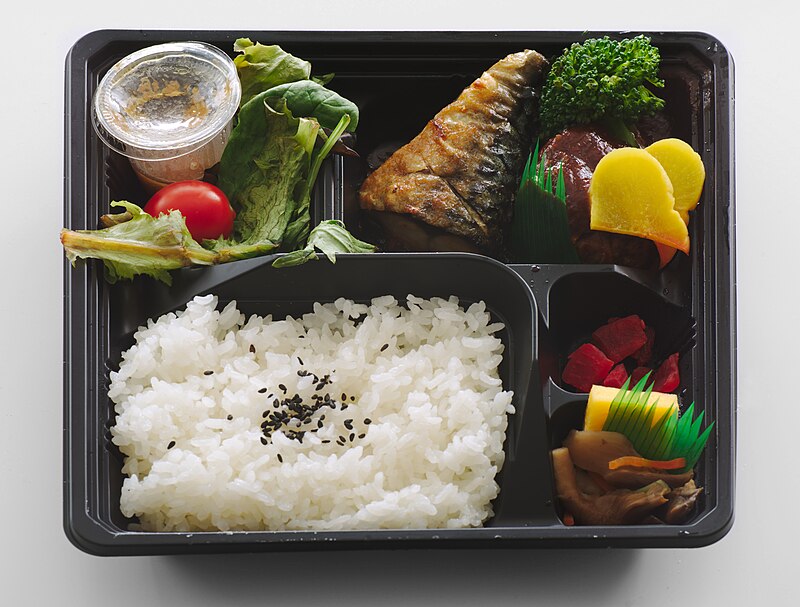Ditch the cling wrap! Check out these budget, eco-friendly alternatives for your kitchen
By
- Replies 8
Almost everyone in the world has cling wrap in their kitchen these days. It’s a handy tool that helps keep food safe and sanitary while storing and transporting it.
Some recipes even require a cling wrap layer to prevent spillage or leaving a sticky residue on your cooking or storage containers. Yet, this kitchen necessity also comes with a huge problem…
We all know that plastic poses a huge hazard to the environment. Some types of plastic can stick around for up to several thousand years!
Since cling wrap is extremely hard to recycle and can harm local wildlife, we suggest you do everything in your power to reduce your plastic use.

There are alternatives to buying cling wrap every few weeks, even though it’s a popular choice in every kitchen around the country. Here are some to try next time you head to the shops!
1. Glass jars
Glass is fantastic for storing food of any kind – from in-season fresh produce to homemade meals that you can carry around with you. They don't affect the taste or smell of the food and you can reuse them over and over.
Clean glass jars from pasta sauce or preserves make for excellent options, too!
If you don’t have any, just ask around for friends and family members. You may get to use their spare jars for a few weeks but don’t forget to return them!
Glass jars are easy to recycle, and so are the lids. You can leave them in your recycling bin or give them to your local council to reuse or recycle.
2. Coil or Bamboo Wrap and cotton or tea towels
There are plenty of non-plastic kitchen ‘shawls’ available in stores as well as online! Ideally, they are durable and inexpensive. You could purchase any of these and see which one works best for you!
Coil wraps can be quite thick, so you would need to wrap and refold a few times over foods. There are bamboo and cotton variations available too – so you have an entire array of options!
Aside from wrapping food, these fabrics also serve as kitchen towels that can be reused for washing plates, drying dishes, cutting boards, and other kitchen essentials.
It’s better to wash them every few days or after you use them a lot! Use only lukewarm water and mild, detergent-free soap. Bring them out in the sun while they are drying.

3. Alfoil
Love it or hate it, alfoil (or alfoil) remains one of the best alternatives to cling wrap when lining baking trays or cooking in pans or casseroles. You can even use it to keep food fresh in the fridge and freezer or to store leftovers that you simply need to wrap in something (any type of food won't stick to the foil) to bring with you on the go.
Even though it is not too environmentally friendly, once the alfoil has been used, you can simply rinse it in warm water and reuse it as many times as you like (keep in mind, though, that certain types of aluminium can react with foods, so it is recommended to choose types that are resistant to acid).
There are reusable alternatives as well, which are made of cloth and can be rinsed after use.
4. Bento boxes
Bento boxes come in many shapes, sizes, and colours. They are often crafted out of wood or plastic and can be used over and over again to store leftovers. For those who want a sustainable alternative for cling wrap in the kitchen, these highly decorative and reusable dishes are the perfect answer!

5. Glass or plastic food storage containers
In the same way, glass jars benefit the environment, glass food containers do too. Even plastic food containers can be less harmful to the environment as they are reusable.
If you’re looking for an even more sustainable option, then you can buy used containers as well.
6. Two plates
You read the title right, folks! Another great alternative to cling wrap that is quite popular with many people out there is the use of a second plate to cover your food. The process is also simple, all you need to do is place another plate on top of the plate containing the food and seal the meal between them.
7. Beeswax Wraps
Perhaps our favourite alternative is beeswax wraps.
Bee's Wraps (a wrap made from beeswax) are sustainable and reusable, making them perfect for those who are looking for eco-friendly alternatives to cling wraps.
The only downside is that Bee's Wrap isn't as pliable as plastic wrap and is not ideal for all foods. It can also be a bit pricey compared to other alternatives. But overall, we think the pros outweigh the cons on this one!

We would also like to add that staff members at your local health food shops, bulk food stores, and second-hand shops may also be able to suggest several reusable options too, so don’t be afraid to ask!
So, there you have it, folks! Hopefully, these alternatives can help you reduce and go plastic-free any time soon.
Members, do you have more tips for avoiding excessive use of cling wrap in the kitchen? Please share them with us in the comments!
Also, a special shoutout to member @Juliana for bringing this topic to our attention! If you have more topic recommendations, feel free to write to us at [email protected].
Some recipes even require a cling wrap layer to prevent spillage or leaving a sticky residue on your cooking or storage containers. Yet, this kitchen necessity also comes with a huge problem…
We all know that plastic poses a huge hazard to the environment. Some types of plastic can stick around for up to several thousand years!
Since cling wrap is extremely hard to recycle and can harm local wildlife, we suggest you do everything in your power to reduce your plastic use.

Excessive use of plastic wraps can damage not just your health but also the environment. Credit: Getty Images.
There are alternatives to buying cling wrap every few weeks, even though it’s a popular choice in every kitchen around the country. Here are some to try next time you head to the shops!
1. Glass jars
Glass is fantastic for storing food of any kind – from in-season fresh produce to homemade meals that you can carry around with you. They don't affect the taste or smell of the food and you can reuse them over and over.
Clean glass jars from pasta sauce or preserves make for excellent options, too!
If you don’t have any, just ask around for friends and family members. You may get to use their spare jars for a few weeks but don’t forget to return them!
Glass jars are easy to recycle, and so are the lids. You can leave them in your recycling bin or give them to your local council to reuse or recycle.
2. Coil or Bamboo Wrap and cotton or tea towels
There are plenty of non-plastic kitchen ‘shawls’ available in stores as well as online! Ideally, they are durable and inexpensive. You could purchase any of these and see which one works best for you!
Coil wraps can be quite thick, so you would need to wrap and refold a few times over foods. There are bamboo and cotton variations available too – so you have an entire array of options!
Aside from wrapping food, these fabrics also serve as kitchen towels that can be reused for washing plates, drying dishes, cutting boards, and other kitchen essentials.
It’s better to wash them every few days or after you use them a lot! Use only lukewarm water and mild, detergent-free soap. Bring them out in the sun while they are drying.

Fabric covers can be used to seal your food. Credit: Pinterest.
3. Alfoil
Love it or hate it, alfoil (or alfoil) remains one of the best alternatives to cling wrap when lining baking trays or cooking in pans or casseroles. You can even use it to keep food fresh in the fridge and freezer or to store leftovers that you simply need to wrap in something (any type of food won't stick to the foil) to bring with you on the go.
Even though it is not too environmentally friendly, once the alfoil has been used, you can simply rinse it in warm water and reuse it as many times as you like (keep in mind, though, that certain types of aluminium can react with foods, so it is recommended to choose types that are resistant to acid).
There are reusable alternatives as well, which are made of cloth and can be rinsed after use.
4. Bento boxes
Bento boxes come in many shapes, sizes, and colours. They are often crafted out of wood or plastic and can be used over and over again to store leftovers. For those who want a sustainable alternative for cling wrap in the kitchen, these highly decorative and reusable dishes are the perfect answer!

Bento boxes are not just for taking out meals, they can also be used to store leftovers! Credit: Wikimedia Commons/Dllu.
5. Glass or plastic food storage containers
In the same way, glass jars benefit the environment, glass food containers do too. Even plastic food containers can be less harmful to the environment as they are reusable.
If you’re looking for an even more sustainable option, then you can buy used containers as well.
6. Two plates
You read the title right, folks! Another great alternative to cling wrap that is quite popular with many people out there is the use of a second plate to cover your food. The process is also simple, all you need to do is place another plate on top of the plate containing the food and seal the meal between them.
7. Beeswax Wraps
Perhaps our favourite alternative is beeswax wraps.
Bee's Wraps (a wrap made from beeswax) are sustainable and reusable, making them perfect for those who are looking for eco-friendly alternatives to cling wraps.
The only downside is that Bee's Wrap isn't as pliable as plastic wrap and is not ideal for all foods. It can also be a bit pricey compared to other alternatives. But overall, we think the pros outweigh the cons on this one!
Key Takeaways
- Almost everyone in the world owns cling wrap in their kitchen these days. It’s a handy tool that helps keep food safe and sanitary while storing and transporting it.
- There are alternatives to buying cling wrap every few weeks, even though it’s a popular choice in every kitchen around the country.
- Glass jars, coil or bamboo wrap and cotton or tea towels, alfoil, bee’s wrap, bento boxes, and glass or plastic food storage containers are all great alternatives to cling wrap.
- You can also use two plates to seal a meal between them.
We would also like to add that staff members at your local health food shops, bulk food stores, and second-hand shops may also be able to suggest several reusable options too, so don’t be afraid to ask!
So, there you have it, folks! Hopefully, these alternatives can help you reduce and go plastic-free any time soon.
Members, do you have more tips for avoiding excessive use of cling wrap in the kitchen? Please share them with us in the comments!
Also, a special shoutout to member @Juliana for bringing this topic to our attention! If you have more topic recommendations, feel free to write to us at [email protected].







